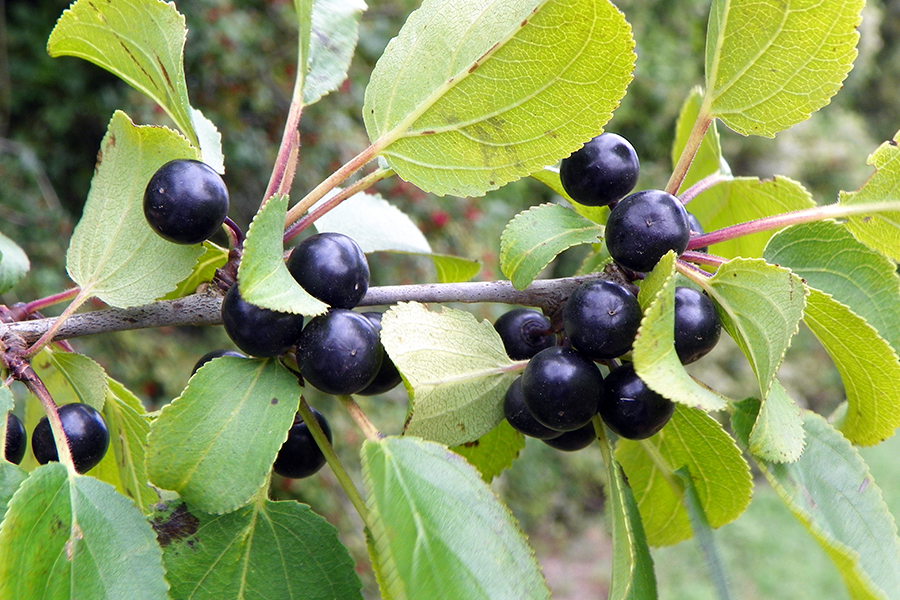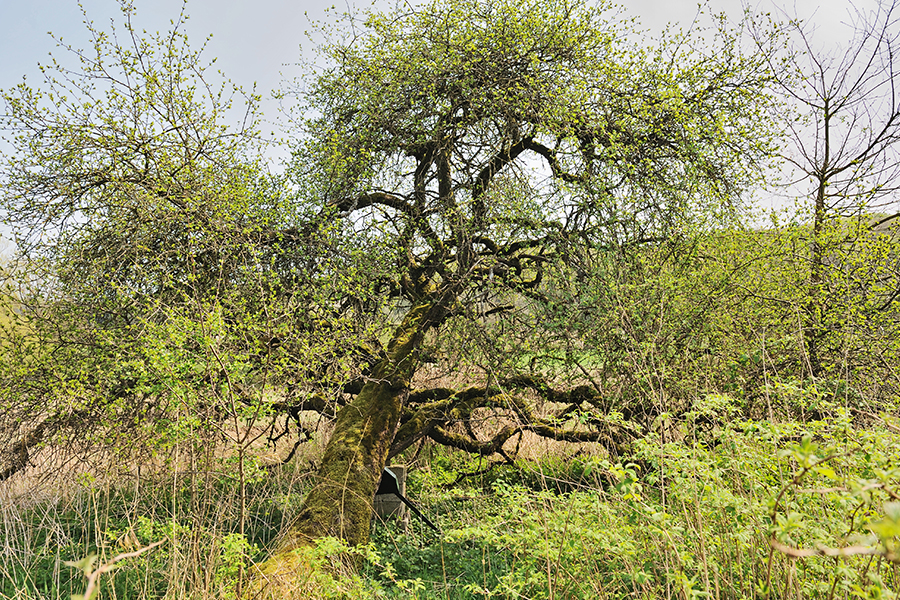Rhamnus cathartica
Buckthorn is a small, deciduous tree native to Europe and western Asia. Widespread across North America, buckthorn has become invasive in many areas and is considered naturalized in others.
Location
A buckthorn can be found off Magnolia Trail where it nears Appleton Trail.


History at Hadwen
There are no formal records of buckthorn in the Hadwen Arboretum until 2020. Due to its potentially invasive nature, it is possible that the present buckthorns were established from seeds of residential yards near the arboretum.
Keep Learning
Detailed Species Information
Buckthorn, also known as European buckthorn or common buckthorn, is a deciduous tree in the family Rhamnaceae native to Europe and western Asia. Introduced to North America in the early 1800s, buckthorn is considered to be naturalized in some areas and invasive in others. Often a small multi-stem tree or shrub, buckthorn can reach 35 feet (10 meters) in height and is fast-growing and short-lived. The bark is dark gray and smooth when young and becomes rough and scaly with maturity. The branches often have small thorns at their ends. The leaves are oval-shaped, finely serrated on the edges, pointed at the tip, and sub-oppositely arranged. The flowers are small, four-petaled, and yellow-green. The fruit of the buckthorn is shiny black drupes that ripen in late summer and often cling to the tree throughout the winter.
In its native range, buckthorn thrives best in sunny and dry habitats such as scrublands and open woodlands. In North America, buckthorn is often found in disturbed areas such as woodlots, roadsides, and the edges of fields and pastures. The seeds are slightly toxic to most animals, except birds which commonly eat and disperse them. The bark, leaves, and fruit of buckthorn also contain allelopathic compounds which inhibit the germination of other plants.
In traditional medicine, the bark and fruit of buckthorn were sometimes ingested as a laxative, but this practice is rarely done today. It was introduced to North America as an ornamental and is still planted as a small tree or shrub in parks and gardens today.
